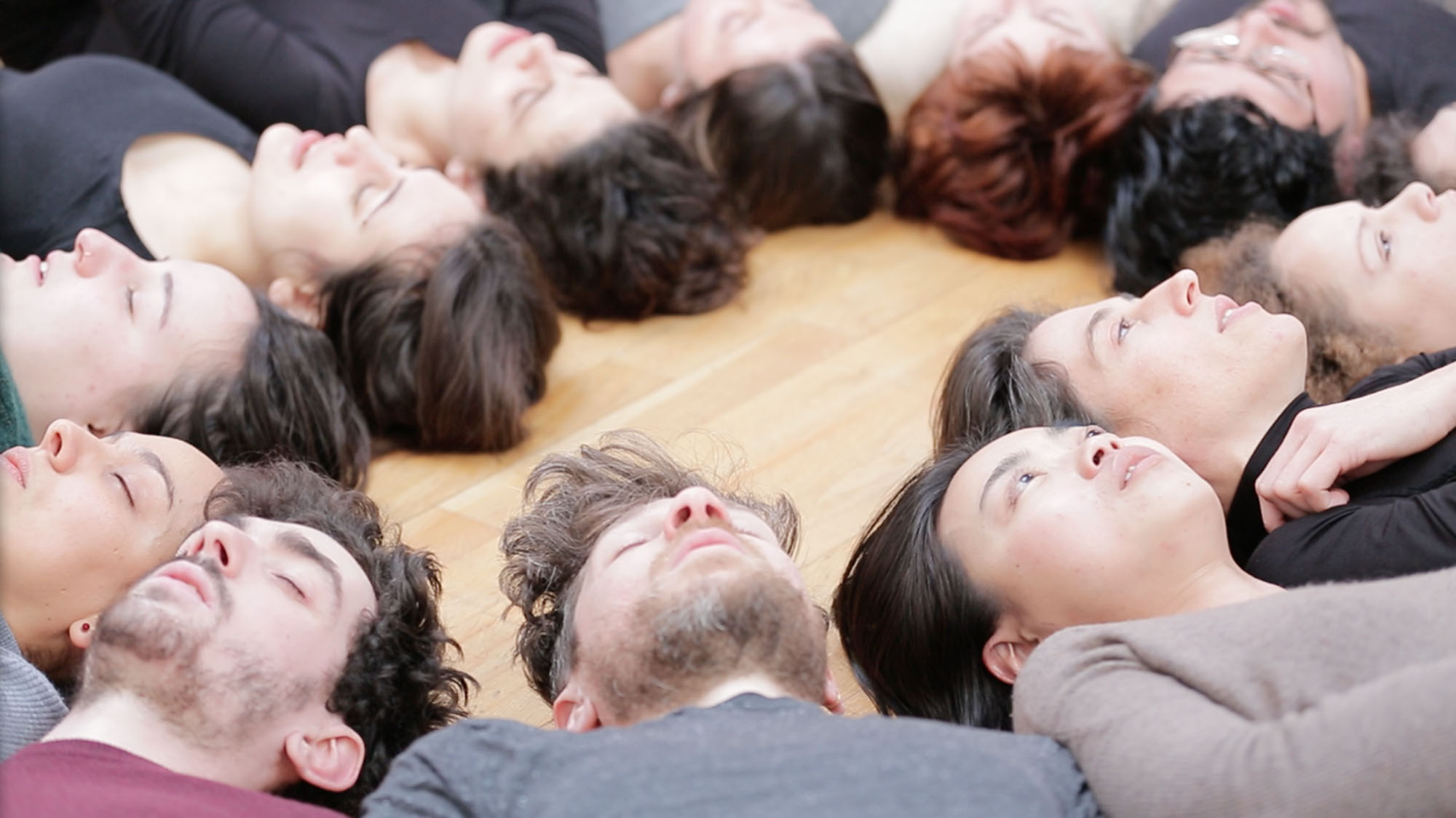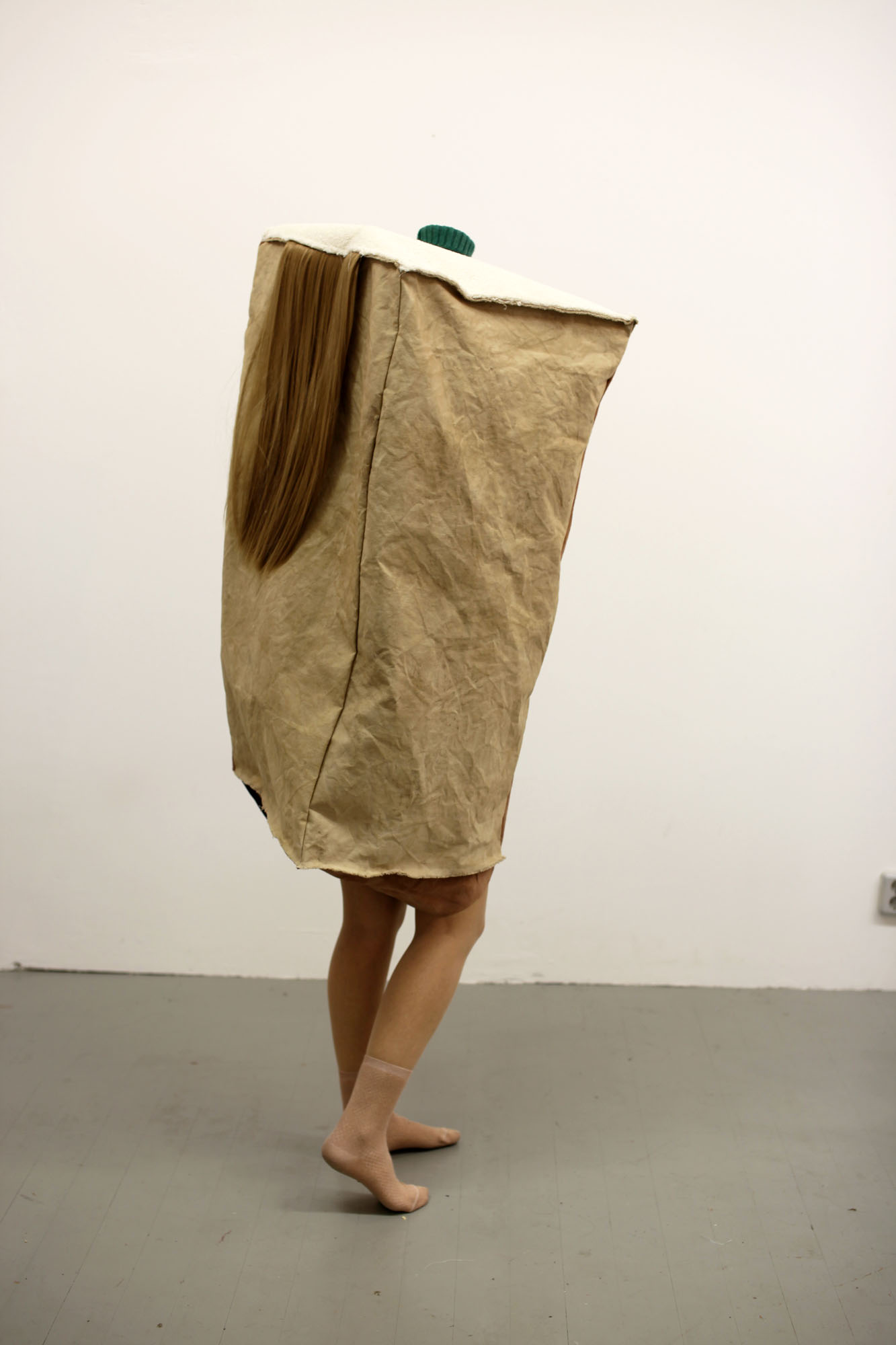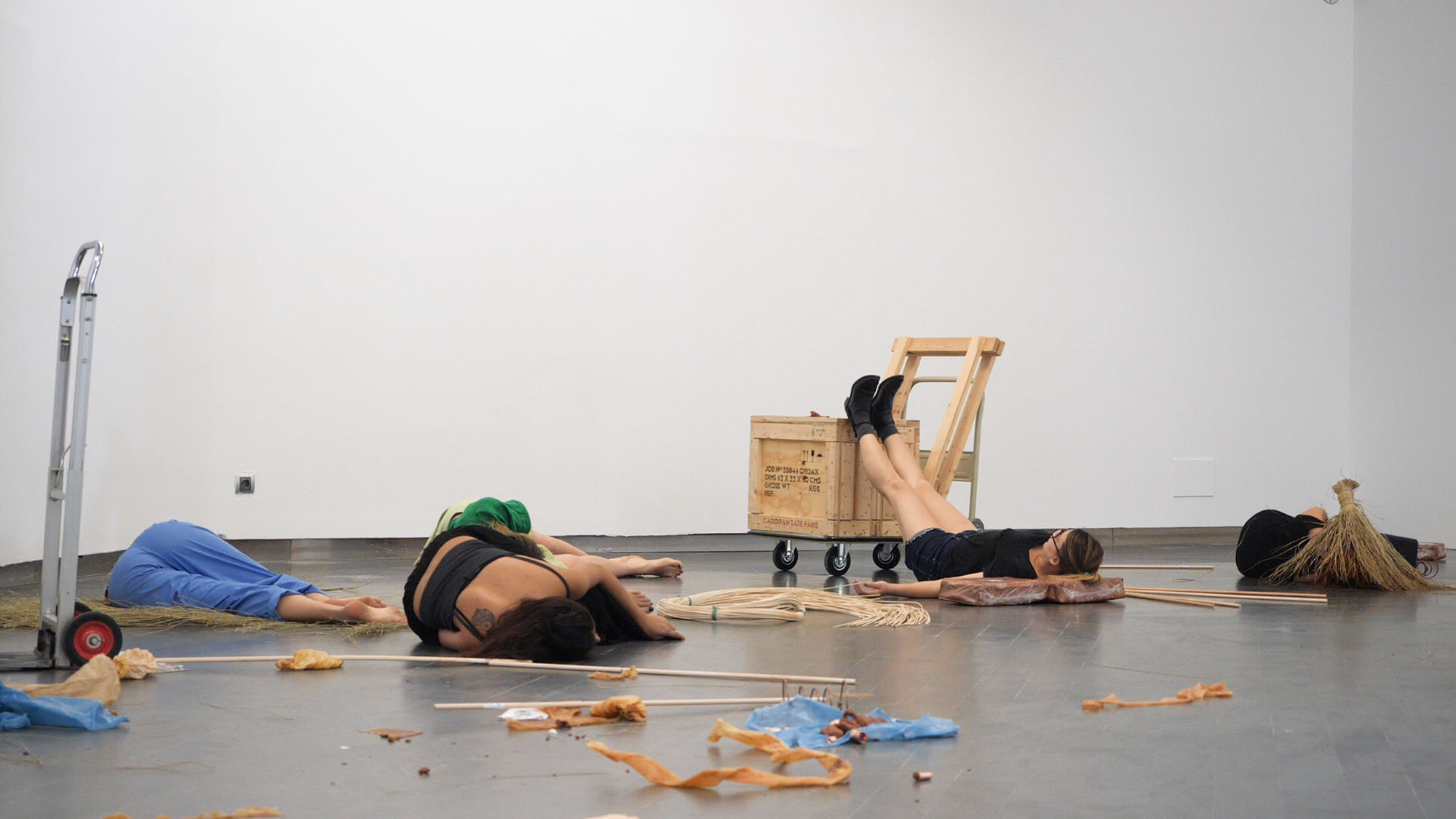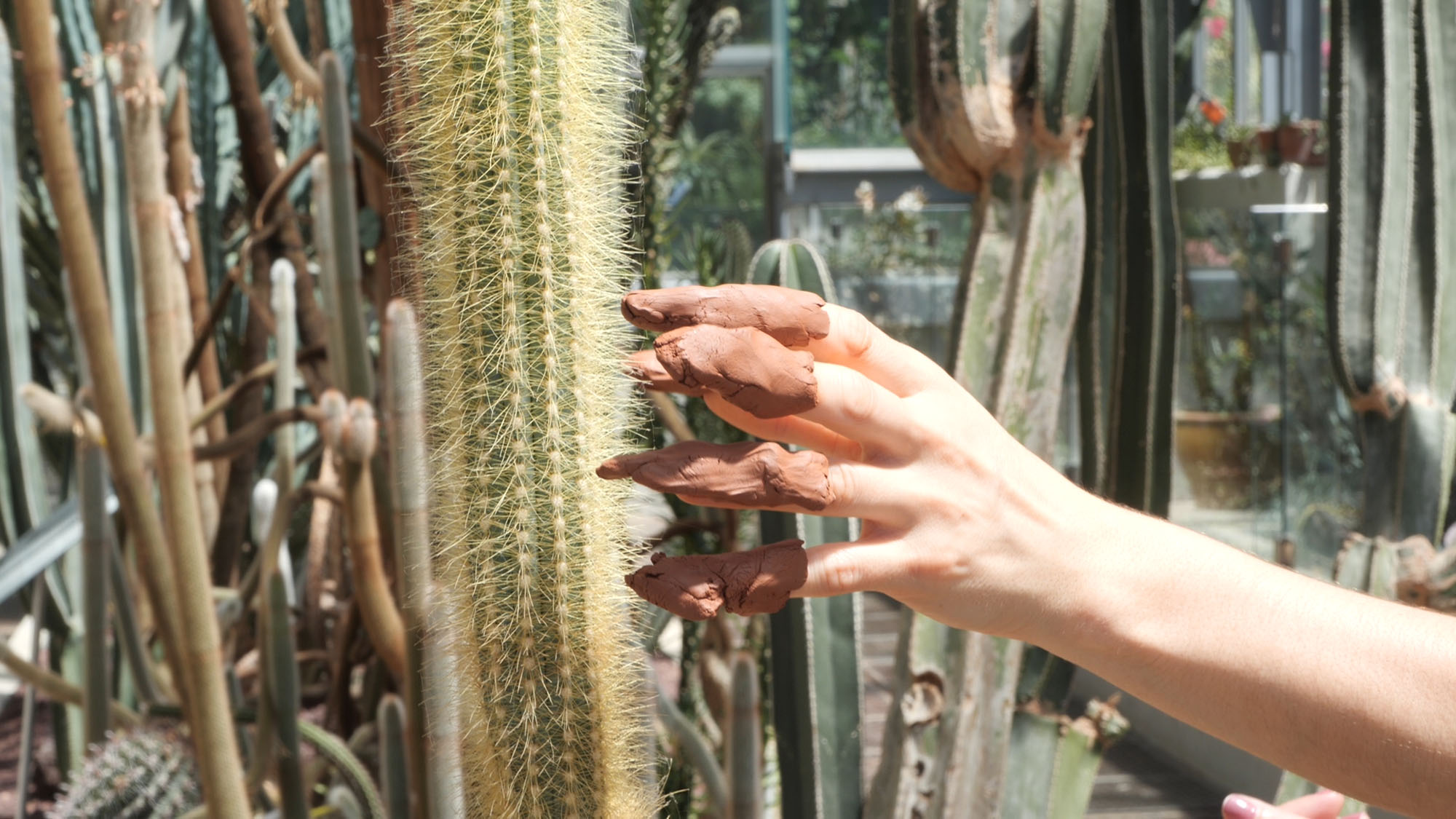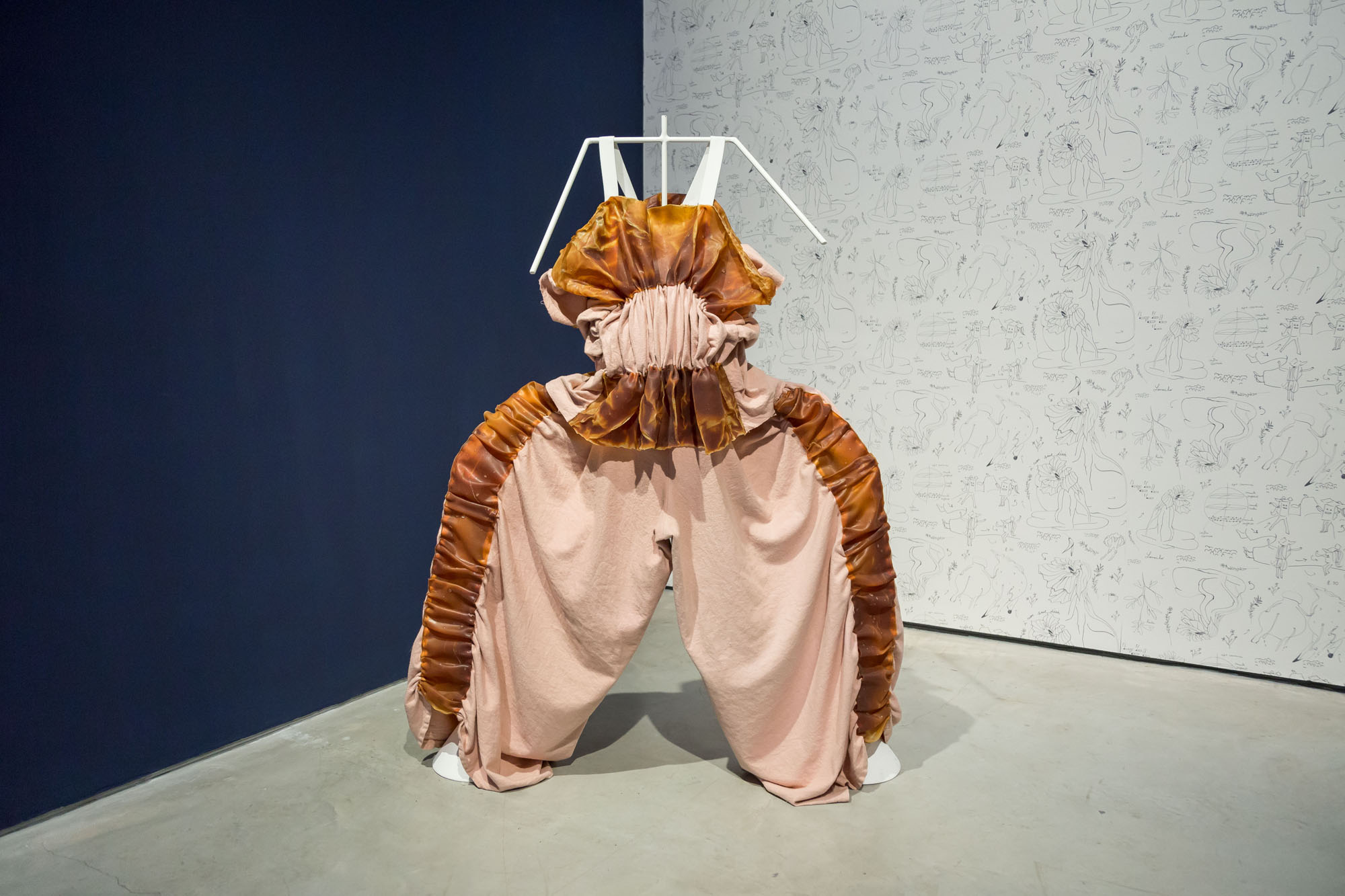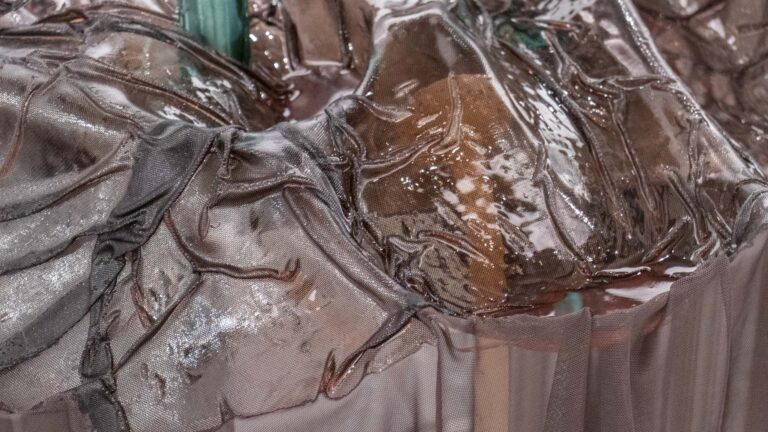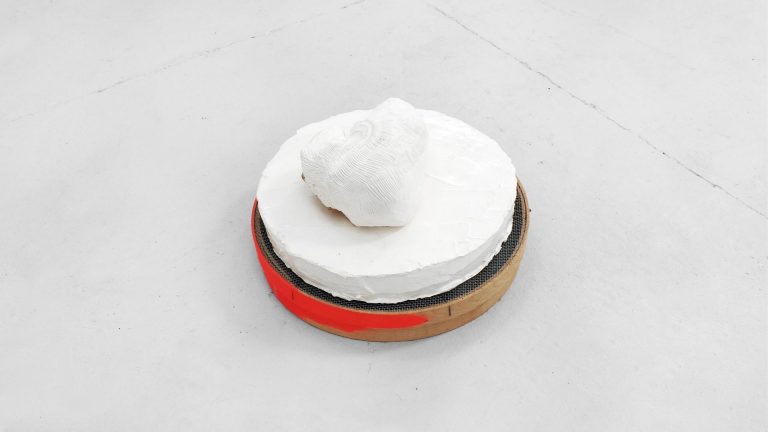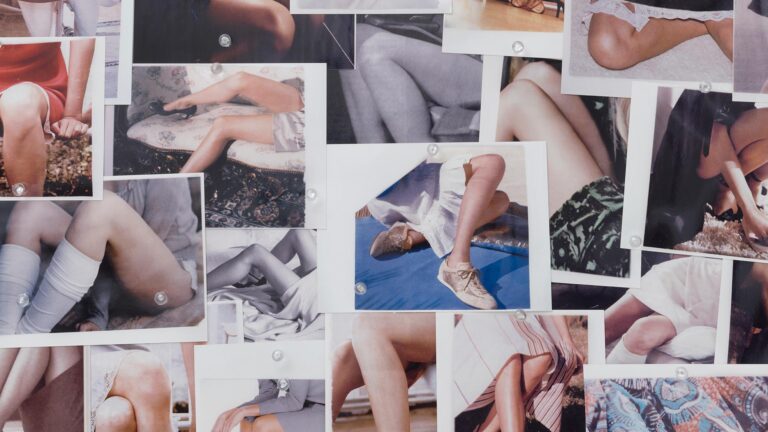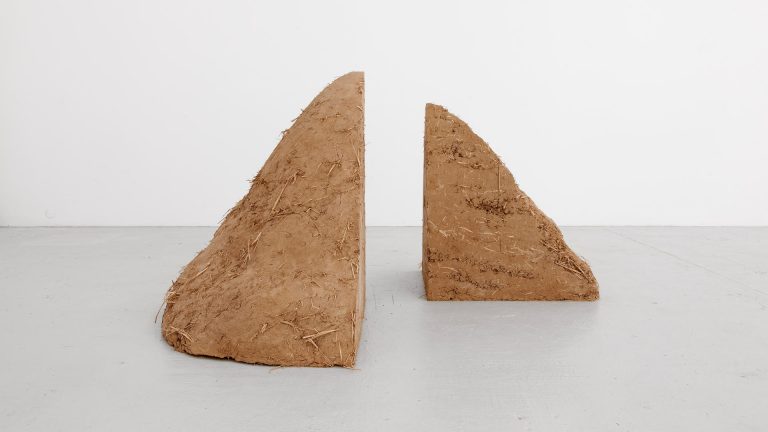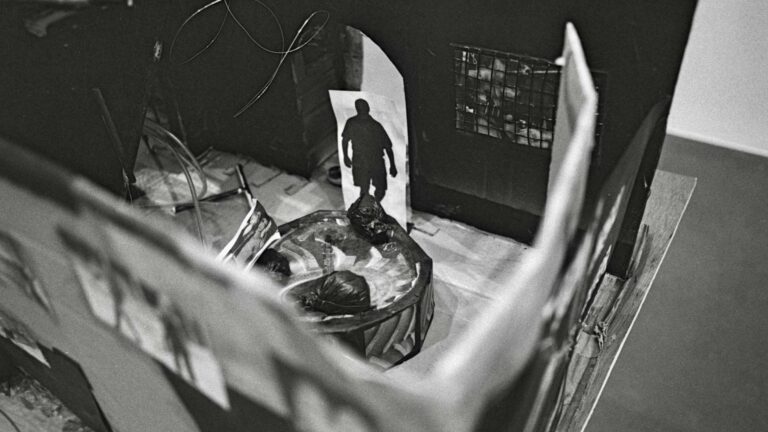Artist: Mercedes Azpilicueta
Exhibition title: Bestiario de Lengüitas
Curated by: Virginie Bobin
Venue: CentroCentro, Madrid, Spain
Date: October 3, 2019 – January 19, 2020
Photography: all images copyright and courtesy of the artist and CentroCentro, Madrid
Bestiario de Lengüitas (Bestiary of Tonguelets), the first large-scale solo exhibition in Europe by Argentine artist Mercedes Azpilicueta (Argentina, 1981), opens at CentroCentro on October 3rd. Curated by Virginie Bobin (France), the exhibition is the result of a research project that began in 2017, in which Azpilicueta combines visual and theatrical strategies to question the ways that we inhabit this world.
The project is produced by CentroCentro in collaboration with Museion – Museum of Modern and Contemporary Art, Bolzano/Bozen (Italy), and CAC Brétigny (France), and will travel to both institutions in 2020. The exhibition is organised in collaboration with Mondriaan Fonds.
Theatre of the senses
Bestiary of Tonguelets invites visitors to enjoy a theatrical experience that unfolds through the senses and movement, following a script for a future performance written by the artist herself.
The works on view invite a choir of grotesque characters to loudly inhabit the stage of that future performance. Using obsolete knowledge systems, “neobarroso” poems, failed translations and ambiguous ingredients, they try to maintain chaos and excess in a world calling for order, efficiency and transparency; revealing an essential feature, humour, a quality that animates most of Mercedes Azpilicueta’s works.
The main characters include Mala-mama, a Sister living in limbo, a Teacher from the future, Fallen angels and a Choir of corpses; several figures from art history and literature such as the medieval Lady with the Unicorn, the artist Lea Lublin and the poet Nestor Perlongher, who inspired her writings and drawings; and a selection of plants with both healing and toxic powers, which were carried across the Atlantic to open contamination channels between the Old World and the New. They all play a game of hide-and-seek across films, drawings, sculptures, tapestries and soundtracks, which are conceived as scores, rehearsals, décors, encoded knowledge systems and even characters, rather than as autonomous artworks.
Many of the pieces have been made using “poor” craft-based or handmade techniques that are often associated with the domestic work of women and with subaltern knowledge, such as sewing, embroidering or dying. The materials are either recycled or natural (latex, leather, silk, wax) and add another layer of stories to the objects, that of the circulation of resources and knowledge often acquired through the violent exploitation of humans and nature.
A script for a performance that has yet to take place
Bestiary of Tonguelets stems from a research project initiated in 2017 in Paris, during a residency at Villa Vassilieff – Pernod Ricard Fellowship. It stems from Mercedes Azpilicueta’s (re)encounters with the work by Argentinian-French, feminist and conceptual artist Lea Lublin; the series of enigmatic medieval tapestries The Lady with the Unicorn, presented at the Cluny Museum in Paris; the literary aesthetics of the Neobarroso Rioplatense, and notably the poems by poet, writer and gay activist Néstor Perlongher; Chilean reggaeton; feminist philosophers from Latin and South America; and imaginary characters and vagabonds from the infra-world.
All these references were translated into an ongoing script that has yet to take place, that serves as a narrative thread for the project and its various manifestations. The script explores the political dimension of desire in relation to affects; the biocultural, biodigital and biophysical body; the affective quality of language; and gender dissent in an aesthetic context.
The script was gradually built through a series of working sessions with several collaborators –artists, artisans, researchers, designers, dancers, singers and groups of students– in Paris, Buenos Aires and Madrid. The main collaborators to the project include: Lucile Sauzet (costumes), Ana Ausín (furniture) and Vanina Scolavino (graphic design), as well as Laura Fernández Antolín (production assistance), Federico García Monfort (sound), Hélène Harder (film), Julien Jassaud (computer programming and robotics), Emmanuelle Lafon (performance), Quiela Nuc (film), Ana Roquero (research), Pauline Simon (performance), Javier Villa (research and performance), Tiago Worm Tirone (sound), students from the Masters Projets Culturels et Artistiques and Scènes du Monde (Université Paris 8) and the Máster en Práctica Escénica y Cultura Visual (Universidad de Castilla-La Mancha y Museo Reina Sofía); and participants from different choral schools in Madrid.
Mercedes Azpilicueta is a visual and performance artist from Argentina (La Plata, 1981), who lives and works in Amsterdam and Buenos Aires. Her practice involves research and production processes that explore the affective qualities and political dimension of language and voice. Calling herself a “dishonest researcher”, Azpilicueta navigates through multiple references and areas of knowledge, from art history to popular music, literature to street culture, falling in love with dissident figures and trajectories (feminist, queer, migrant, exiled individuals) who haunt her scripts, performances and videos. By engaging the body with all its flaws and potentials –her own body, that of her models and collaborators, that of the spectators, but also fantasized ones– Azpilicueta embraces its fragility as well as its capacity for resistance and care.
After graduating with a Visual Arts degree from the National University of the Arts (UNA) in Buenos Aires, in 2011 she travelled to the Netherlands to do a Master’s degree at the Dutch Art Institute/ArtEZ Hogeschool voor de Kunsten in Arnhem. She was an artist-in-residence at the Rijksakademie van de Beeldende Kunsten in Amsterdam in 2015-16, and in 2017 she received the Pernod Ricard/Villa Vassilieff Fellowship for a residency in Paris. Following several projects and showings at the REDCAT Gallery (Los Angeles, 2018), Villa Vassilieff (Paris, 2018), Museion (Bolzano, 2018), MACBA (Barcelona, 2018) and Centro de Arte Dos de Mayo (Madrid, 2017), in 2018 she presented her first solo exhibition at the Museum of Modern Art in Buenos Aires. In 2019 she received the ARCO Award from the regional government of Madrid for her work Artemisia Gentileschi: Judith Decapitating Holofernes, exhibited in Nogueras Blanchard Gallery in Madrid. This year she will present a solo exhibition at Van Abbemuseum in Eindhoven, as part of Positions #5, curated by Nick Aikens.
Mercedes Azpilicueta, Bestiario de Lengüitas, 2018-2019. Fallen Angels, video still
Mercedes Azpilicueta, Bestiario de Lengüitas, 2018-2019. Fallen Angels, video still
Mercedes Azpilicueta, Bestiario de Lengüitas,2018-2019. La femme-maison, video still
Mercedes Azpilicueta, Bestiario de Lengüitas,2018-2019. La femme-maison, video still
Mercedes Azpilicueta, Bestiario de Lengüitas,2018-2019. La femme-maison, video still
Mercedes Azpilicueta, Bestiario de Lengüitas,2018-2019. Marginalia, drawing
Mercedes Azpilicueta, Bestiario de Lengüitas,2018-2019. Paris is Breathing, video still
Mercedes Azpilicueta, Bestiario de Lengüitas,2018-2019. Soft Armour, Photo: Mathilde Assier, Villa Vassilieff / Pernod Ricard Fellowship, Paris
Mercedes Azpilicueta, Bestiario de Lengüitas,2018-2019. Soft Armour, Photo: Mathilde Assier, Villa Vassilieff / Pernod Ricard Fellowship, Paris
Mercedes Azpilicueta, Bestiario de Lengüitas, 2018-2019. Soft Armour
Mercedes Azpilicueta, Bestiario de Lengüitas, 2018-2019. Soft Armour
Mercedes Azpilicueta, Bestiario de Lengüitas, 2018-2019. Soft Armour
Mercedes Azpilicueta, Bestiario de Lengüitas, 2018-2019. Soft Armour
Mercedes Azpilicueta, Bestiario de Lengüitas, 2018-2019, video still
Mercedes Azpilicueta, Bestiario de Lengüitas, 2018-2019, video still
Mercedes Azpilicueta, Bestiario de Lengüitas, 2018-2019, video still
Mercedes Azpilicueta, Bestiario de Lengüitas, 2018-2019, video still
Mercedes Azpilicueta, Bestiario de Lengüitas, 2018-2019, video still
Mercedes Azpilicueta, Bestiario de Lengüitas, 2018-2019, video still
Mercedes Azpilicueta, Bestiario de Lengüitas, 2018-2019, video still
Mercedes Azpilicueta, Bestiario de Lengüitas, 2018-2019, video still
Mercedes Azpilicueta, Bestiario de Lengüitas, 2018-2019, video still
Mercedes Azpilicueta, Bestiario de Lengüitas, 2018-2019, video still
Mercedes Azpilicueta, Bestiario de Lengüitas, 2018-2019, video still
Mercedes Azpilicueta, Bestiario de Lengüitas, 2018-2019. We feel intoxicated, Wallpaper
Mercedes Azpilicueta, Bestiario de Lengüitas, 2018-2019. Working process, video still
Mercedes Azpilicueta, Cuerpos Pájaros, 2018-2019, photo: Guido Limardo / Museo de Arte Moderno de Buenos Aires
Mercedes Azpilicueta, Cuerpos Pájaros, 2018-2019, photo: Guido Limardo / Museo de Arte Moderno de Buenos Aires
Mercedes Azpilicueta, Cuerpos Pájaros, 2018-2019, photo: Guido Limardo / Museo de Arte Moderno de Buenos Aires
Mercedes Azpilicueta, Cuerpos Pájaros, 2018-2019, photo: Guido Limardo / Museo de Arte Moderno de Buenos Aires
Mercedes Azpilicueta, Cuerpos Pájaros, 2018-2019, photo: Guido Limardo / Museo de Arte Moderno de Buenos Aires
Mercedes Azpilicueta, Cuerpos Pájaros, 2018-2019, photo: Guido Limardo / Museo de Arte Moderno de Buenos Aires
Mercedes Azpilicueta, Cuerpos Pájaros, 2018-2019, photo: Guido Limardo / Museo de Arte Moderno de Buenos Aires
Mercedes Azpilicueta, Cuerpos Pájaros, 2018-2019, photo: Guido Limardo / Museo de Arte Moderno de Buenos Aires








